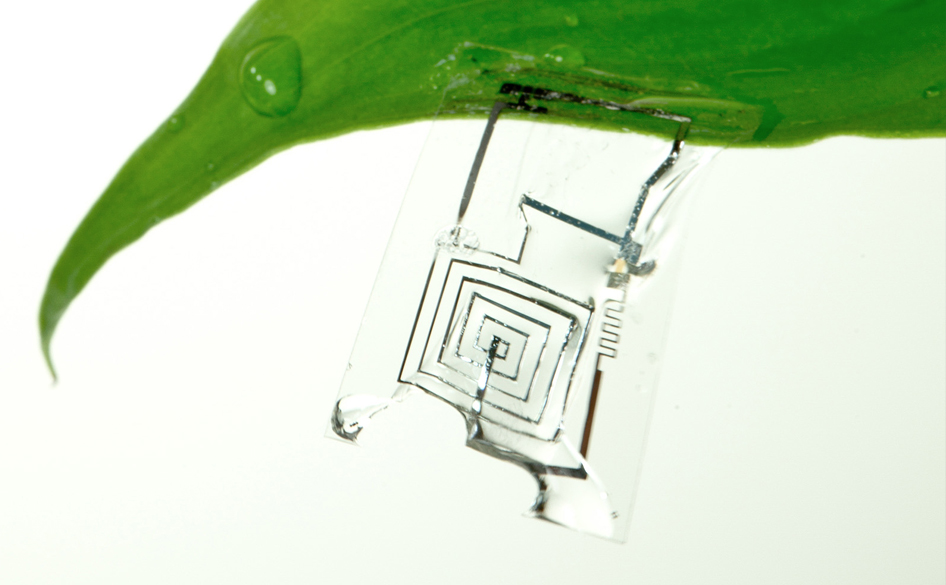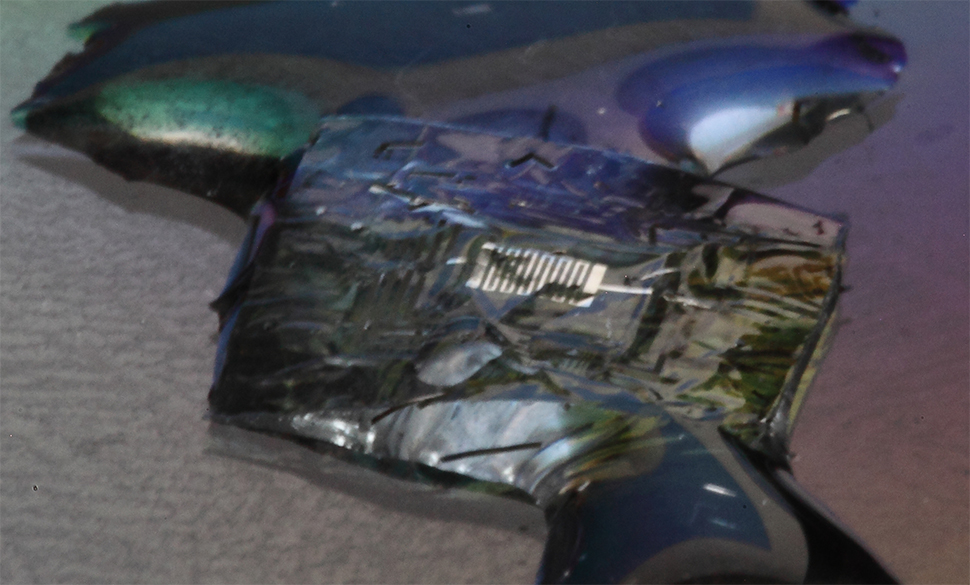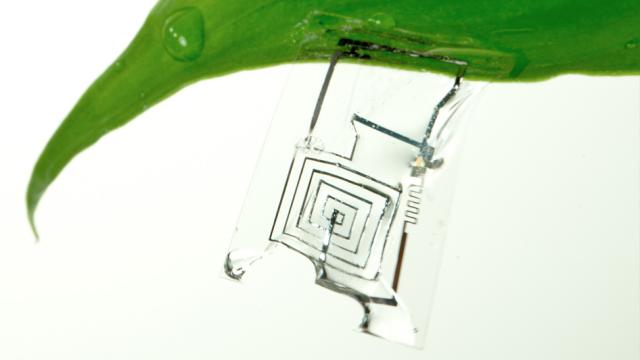Planned obsolescence is a dirty word for most tech consumers. But for scientists developing a new breed of circuitry that vanishes on command, it’s the ultimate goal. Christened “transient” or “dissolving” electronics, these devices are poised to change how electronics decay, how wounds heal and how war is fought.
Leading the pack is a University of Illinois at Urbana-Champaign material scientist named John Rogers, who heads up a team of researchers working on circuit boards that dissolve when wet. The nickname for the project? Born to Die. “You don’t need your mobile phone to last for 25 or 50 years,” he told the Associated Press this week. “You don’t want to keep it that long anyway.” Instead, Rogers and his team imagine devices with extremely precise use-by dates — after which they wither away like a dead plant.

Rogers’ team — along with Iowa State University and a few others — are building magnesium and silicone circuitry that’s printed on thin layers of silk, which dissolve over time when wet. According to Rogers, the biggest pragmatic challenge is figuring out how to plan the demise of a device accurately. “We’re talking about electronics that are very specifically engineered to have excellent properties, time independent, until the programmed moment at which you don’t need the device anymore, and then is dissolves away,” he says. “That’s the trick.”
But while a smartphone that dissolves when it’s thrown away sounds great — and environmentally sound — Rogers’ research has implications that reach far beyond consumer tech. For example, in April, he and a partner at Washington University published a paper in Science describing how they injected tiny diodes — one quarter the width of a human hair — into the brains of mice, allowing them to monitor and control the temperature of the brain tissue inside. Eventually, these tiny diodes could help better treat neurological conditions. Or, a silk-based “electroceutical” inserted into a wound could monitor bacteria levels, heating up to zap potential infections long before they threaten the health of a patient.
DARPA is funding much of Rogers’ transient research, and it’s easy to see why the military is interested. We’ve noted how security is a major challenge with combat electronics — soldiers have to lug heavy devices in an out of combat, lest the tech fall into the wrong hands. A transient communication device, however, would come with its own water-activated kill-switch.

Picture: DARPA
“The commercial off-the-shelf, or COTS, electronics made for everyday purchases are durable and last nearly forever,” said DARPA manager Alicia Jackson earlier this year. “DARPA is looking for a way to make electronics that last precisely as long as they are needed. The breakdown of such devices could be triggered by a signal sent from command or any number of possible environmental conditions, such as temperature.”
Of course, we’re a long ways off from seeing Rogers’ work on the consumer market, but it’s still exciting to imagine how dissolving circuits could change a whole host of other fields — from wearable tech that monitors your brain from the inside out, to smart architecture whose electronic systems dissolve after a specific number of decades. [AP]
